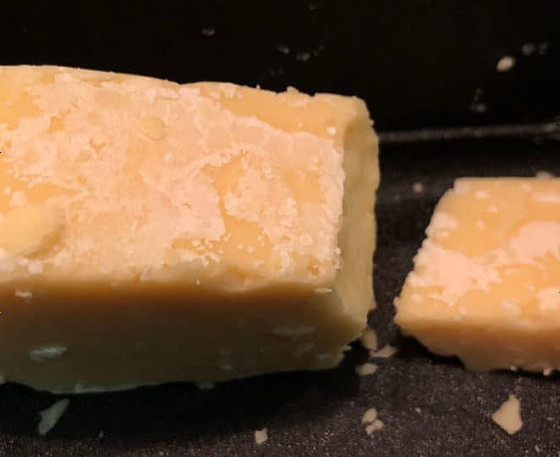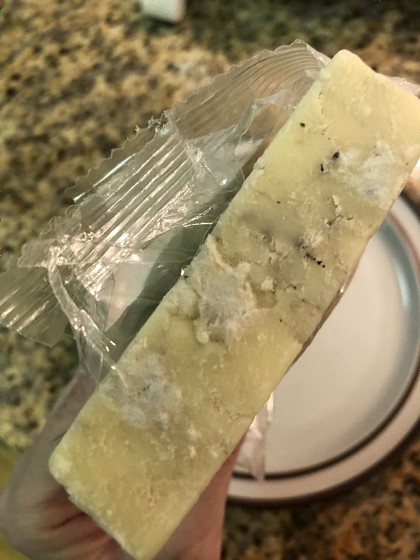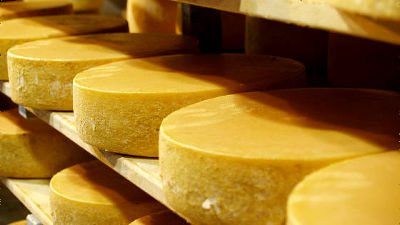Even if cheese turns white, it may not be mold, so you should learn how to tell the difference.

Many people have the impression that cheese is prone to mold. However, the white patterns that look like mold at first glance can actually be harmless crystals. By learning how to distinguish between crystals and mold, you can avoid the accident of wasting delicious cheese.
Cheese Crystals
How to tell if white stuff on cheese is molded
https://www.eatortoss.com/how-to-tell-if-white-stuff-on-cheese-is-mold/
Aged cheddar with a crusty, white smear?
https://www.eatortoss.com/aged-cheddar-with-a-crusty-white-smear/
If you look at the surface of the cheddar cheese below, you'll see that it's covered in white material. This white material is not mold, but calcium lactate crystals, and is safe to eat.

Calcium lactate is a compound of lactic acid and calcium, which is produced during the cheese ripening process and exists mixed in the cheese. Calcium lactate dissolves easily in water, so when water droplets form on the surface of the cheese, it is attracted to the water and moves to the surface. When the water evaporates, it appears as white crystals. For this reason, calcium lactate and lactic acid crystals can be seen as 'evidence of well-ripened cheese.'
Unlike calcium lactate crystals, mold has the characteristic of having fine thread-like structures protruding from the surface of the white area. The white area in the image below is mold.

If you can't tell the difference just by looking at it, try scraping it off with a knife. Calcium lactate can be scraped off with a scraping motion, but mold will crumble apart.

By the way, shredded cheese is more likely to grow mold than block cheese. After opening shredded cheese, you should seal it tightly and eat it as soon as possible.
Is shredded cheese prone to mold? | Dairy and Dairy Product Q&A | Japan Dairy Industry Association
https://nyukyou.jp/dairyqa/2107_214_283/
Related Posts:
in Food, Posted by log1o_hf







